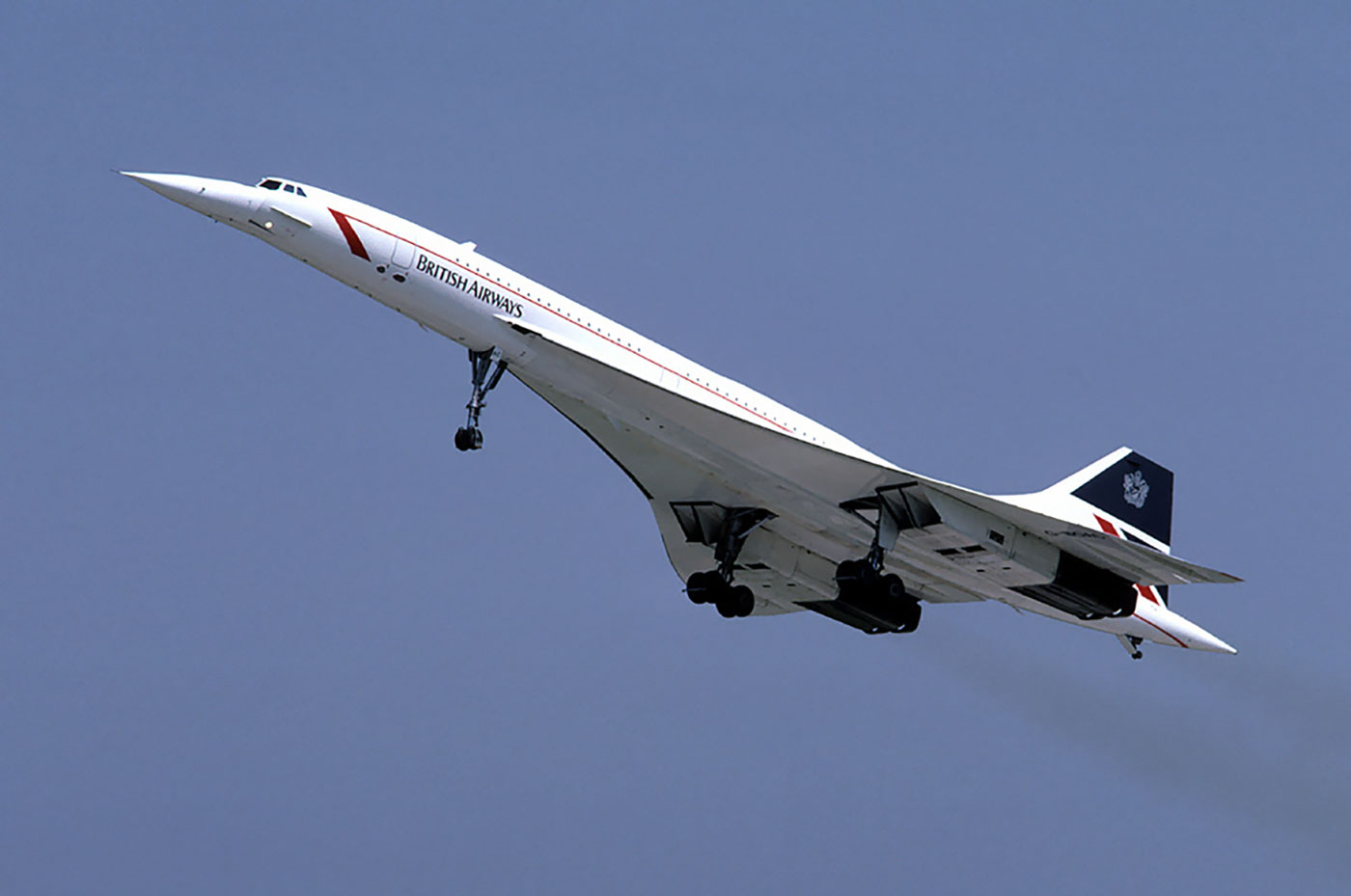

‘Concorde: An Engineering Failure?’ by Dr Fred Starr
14th December 2022 @ 5:30 pm - 8:00 pm
The challenge of designing a supersonic passenger transport, and the reason why Concorde fell short of the range and passenger capacity.
This is not about the Air France Concorde air crash. It is about the challenge of designing a supersonic passenger transport, and the reasons why Concorde fell short of the range and passenger carrying ability originally expected. As a result, commercial interest in Concorde fell away. Failure to meet targets is a feature of “engineering failures”, which impress the public and politicians, and appear successful, but no one buys them.
Operating very close to the speed of sound, or the Sound Barrier in other words, is extremely costly in terms of fuel consumption. Indeed, once Concorde was through the Sound Barrier, the faster it flew, the more economical was it, and the greater the range. However, high speed subjects an airframe to high temperatures, and given the strength and temperature performance of aluminium alloys, the best that could be hoped for was Mach 2.2, or 1450 mph.
Then there was the power needed to get through the sound barrier…..Approximately twice as much thrust is needed to fly at just above the speed of sound, as is required to fly just below it. And for supersonic flight a rather unusual type of jet engine is needed. All that Britain had was the Bristol Olympus, a really great engine, but dating from the early fifties. By 1960 it had already been “stretched” to meet the needs of the latest Avro Vulcan bombers. It was a huge challenge to produce even more thrust.
Another big issue was the sonic boom. Initially dismissed, when Concorde was first envisaged, it slowly became clear that sonic bangs, scores of times a day, could not be tolerated. Unfortunately, flying at subsonic speeds, over land, cut Concorde’s range.
As the design and construction of Concorde proceeded, weight increased. Afterburning became necessary at take off, and a longer period at afterburning thrust was needed when getting through the transonic range. Impacting on fuel demands and aircraft weight. Increased weight was too much for the aluminium structure at Mach 2.2. Restricting cruising speed to Mach 2.04 or 1345 mph. Range suffered, as at supersonic speed, slower means less economical flight.
A vicious circle had begun, where, in addition, the restriction on supersonic flight over land added to the range challenge. Concorde became good for nothing more than London-Washington and Paris-Washington. In addition, on hot days, out of Washington, passenger numbers were restricted. As were sales to airline companies, other than Air France and British Airways.
The talk ends with a few words about the hopes for “supersonic business jets”. This might interest genuine multi millionaires in the audience.
About the Lecturer
Dr Fred Starr FIMMM, FIE, MIMechE, C. Eng.
Usually, any biography about me has emphasised my British Gas/Metallurgy/Energy background. As the present talk is on Concorde, specifically “Was it an Engineering Failure” I thought it helpful to show, that while I have no formal training in aeronautical engineering, I have enough background to say something useful and different about the subject in point.
My interest in the technical side of aviation began when I was still in the Sixth Form, mainly through the series of articles that the aviation journalist, Roy Braybrook wrote in the magazine, “Flying Review”. Here he endeavoured to estimate the performance of the latest Russian fighters and bombers. He showed me that there was a science behind the design of aircraft. I eventually had the pleasure of meeting Roy in the Woodman, near Leatherhead, where I was able to tell him that his stuff had gone towards saving my career at British Gas. He sniffed, in his curmudgeonly way, until I told him that I had built a closed cycle gas turbine.
There was a long gap between reading Flying Review in the 1960s and the Closed Cycle Gas Turbine Project. When, in the late 1980s, after I had outlined the proposal to Grev Gibson, an Assistant Director at British Gas, London Research Station, in Fulham, I was told to get on with it. Since almost all of my spare time had been spent reading up on aircraft and aircraft engine design, I had enough basic knowledge to take the project forward. Doing the job meant I had to professionalise my hobby.
One of the key parts of the closed cycle is the gas turbine itself. But it has to be of an unusual type. Although having a high inlet temperature, it runs at a very low pressure ratio. For this reason, engine builders in this country couldn’t help. However, the Helicopter Division at Westlands told me that my best option would be a modified diesel truck turbocharger. Try Holset Ltd, in Huddersfield, they said. So a “Closed Cycle Demonstrator” was built on Coleshill Gas works. As well as the truck turbocharger, it incorporated a fired heater, printed circuit recuperator and fin fan cooler. The attached picture shows Grev Gibson and myself overlooking the Demonstrator. As you will see it was not intended to take off!
